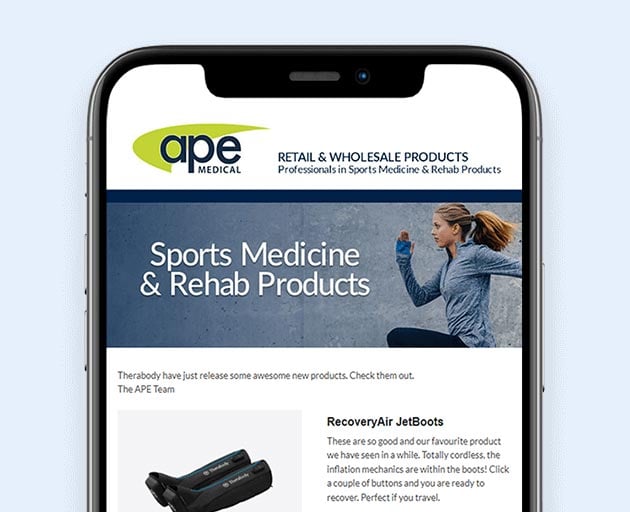Once a player has been deemed to have a soft tissue injury and has been removed from the field of play, initial treatment must be commenced. The treatment a player receives immediately after an injury occurs can significantly affect the ongoing severity of the injury and greatly affect the length of time for the injury to recover.
There has been a recent change from the PRICER model to the new PEACE & LOVE model. Regardless of what model the aims of the initial treatment is to reduce inflammation and bleeding, reduce swelling and reduce pain. By reducing all of these factors there will be less scar tissue formation and improved mobility all of which will improve healing. An injury typically needs to have a relative rest period of 2-3 days to allow the bleeding to stop and for new capillary blood vessels to form.
PEACE

P for Protect
Unload or restrict movement for 1–3 days to minimise bleeding, prevent distension of injured fibers and reduce the risk of aggravating the injury. Rest should be minimised as prolonged rest can compromise tissue strength and quality.
E for Elevate
Elevate the limb higher than the heart to promote interstitial fluid flow out of tissues.
A for Avoid anti-inflammatories
The various phases of inflammation help repair damaged soft tissues. Thus, inhibiting inflammation using medications may negatively affect long-term tissue healing, especially when higher dosages are used. Standard of care for soft-tissue injuries should not include anti-inflammatory medications.
There is currently a question mark on the use of ice therapy. Despite widespread use among clinicians and the population, there is no high-quality evidence on the efficacy of ice for treating soft-tissue injuries. Even if mostly analgesic, ice could potentially disrupt inflammation, angiogenesis and re-vascularisation, delay neutrophil and macrophage infiltration as well as increase immature myofibers. This may lead to impaired tissue repair and redundant collagen synthesis.
C for Compress
External mechanical pressure using taping or bandages helps limit intra-articular oedema and tissue hemorrhage. Despite conflicting studies, compression after an ankle sprain seems to reduce swelling and improve quality of life.
E for Educate
Therapists should educate patients on the benefits of an active approach to recovery. Passive modalities, such as electrotherapy, manual therapy or acupuncture, early after injury have insignificant effects on pain and function compared with an active approach, and may even be counterproductive in the long term. Indeed, nurturing an external locus of control or the ‘need to be fixed’ can lead to therapy-dependent behaviour. Better education on the condition and load management will help avoid overtreatment. This in turn reduces the likelihood of unnecessary injections or surgery, and supports a reduction in the cost of healthcare (eg, due to disability compensation associated with low back pain). In an era of hi-tech therapeutic options, we strongly advocate for setting realistic expectations with patients about recovery times instead of chasing the ‘magic cure’ approach.
After the first few days, soft tissues need LOVE.
LOVE

L for Load
An active approach with movement and exercise benefits most patients with musculoskeletal disorders. Mechanical stress should be added early and normal activities resumed as soon as symptoms allow. Optimal loading without exacerbating pain promotes repair, re-modelling and builds tissue tolerance and the capacity of tendons, muscles and ligaments through mechanotransduction.
O for Optimism
Optimistic patient expectations are associated with better outcomes and prognosis. Psychological factors such as catastrophisation, depression and fear can represent barriers to recovery. Beliefs and emotions are thought to explain more of the variation in symptoms following an ankle sprain than the degree of pathophysiology.
Be positive and focus on all the things you can do rather than what you can’t. Focus on improving and getting better. You will get better. Fear, apprehension and negativity will hinder your improvement and recovery.
V for Vascularisation
Cardiovascular activity represents a cornerstone in the management of musculoskeletal injuries. While research is needed on dosage, pain-free aerobic exercise should be started a few days after injury to boost motivation and increase blood flow to the injured structures. Early mobilisation and aerobic exercise improve physical function, supporting return to work and reduce the need for pain medication in individuals with musculoskeletal conditions..
Consider other activities such as swimming, cycling or arm ergo’s as examples.
E for Exercise
There is a strong level of evidence supporting the use of exercise for the treatment of ankle sprains and for reducing the prevalence of recurrent injuries. Exercises help to restore mobility, strength and proprioception early after injury. Pain should be avoided to ensure optimal repair during the subacute phase of recovery, and should be used as a guide for exercise progressions.
Always do NO HARM
In the first 3-5 days follow the below acronym to prevent further tissue damage, bleeding, swelling and pain.

It always recommended to get a review by a health practitioner for any injury. Your practitioner will be able to provide you a proper diagnosis and management plan, including a rehab program, that will help get you back as soon as possible. If for any reason the injury is not improving as it should be, they can then also be involved in investigating what else may be at play and direct you in the right way.






